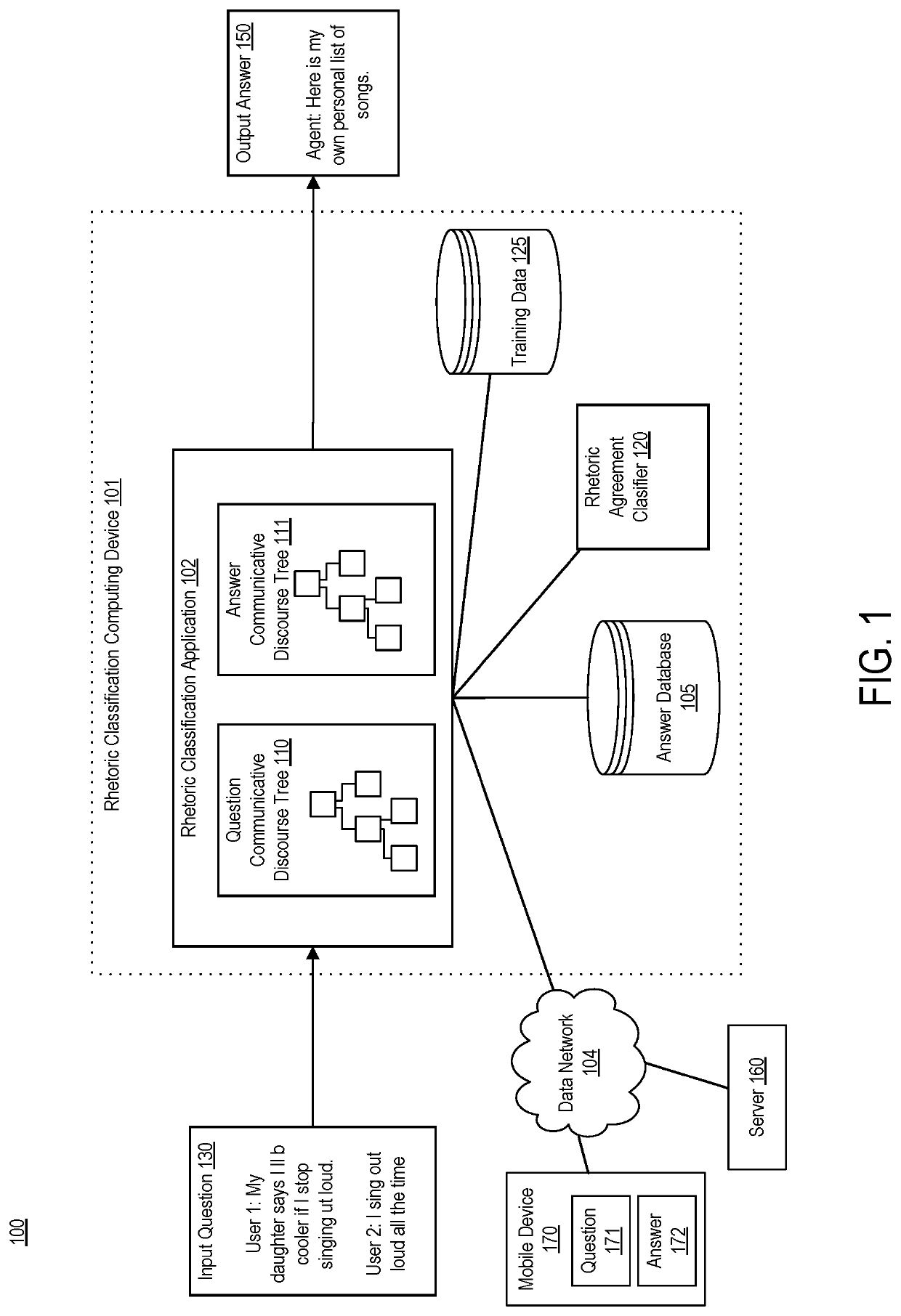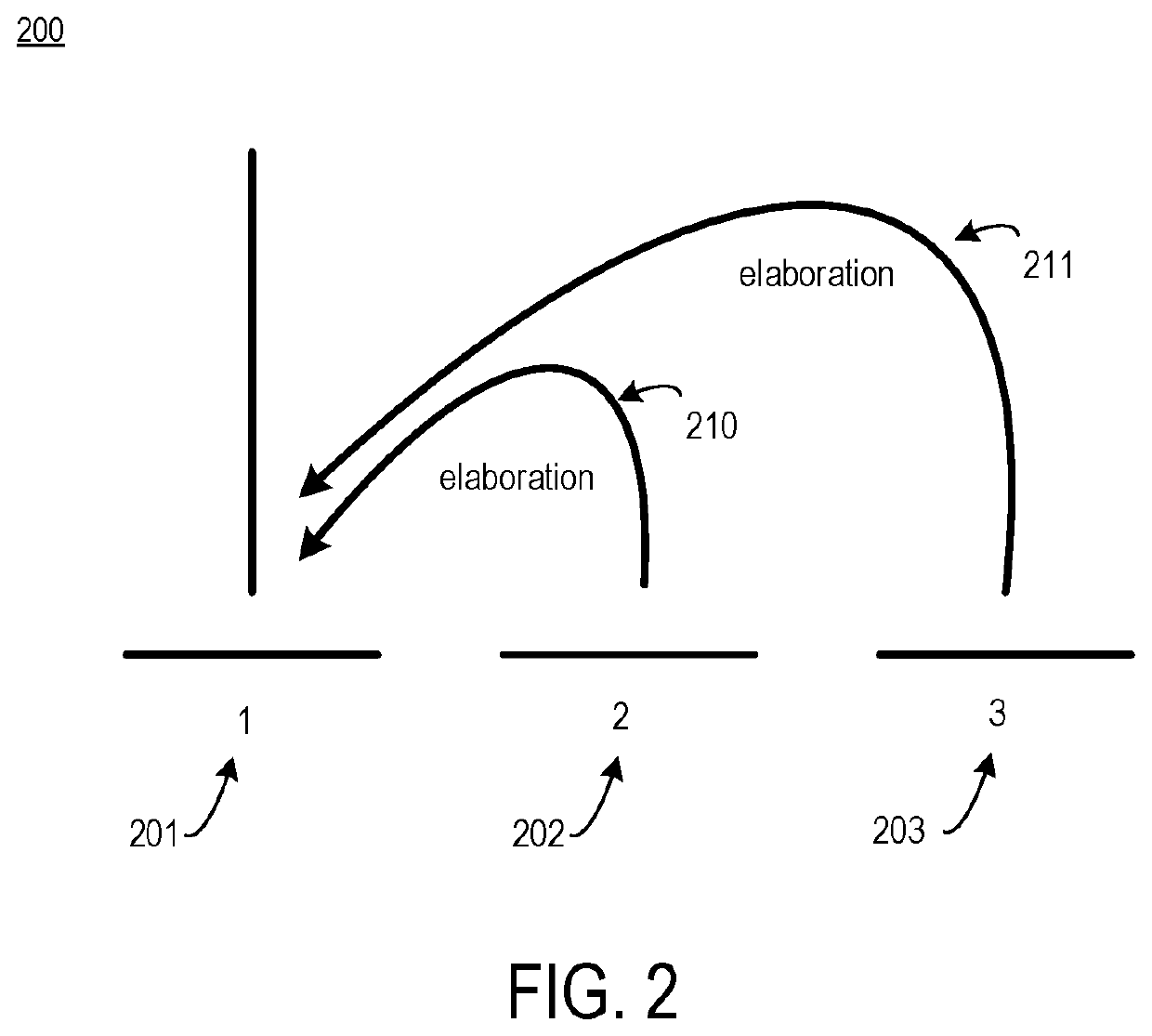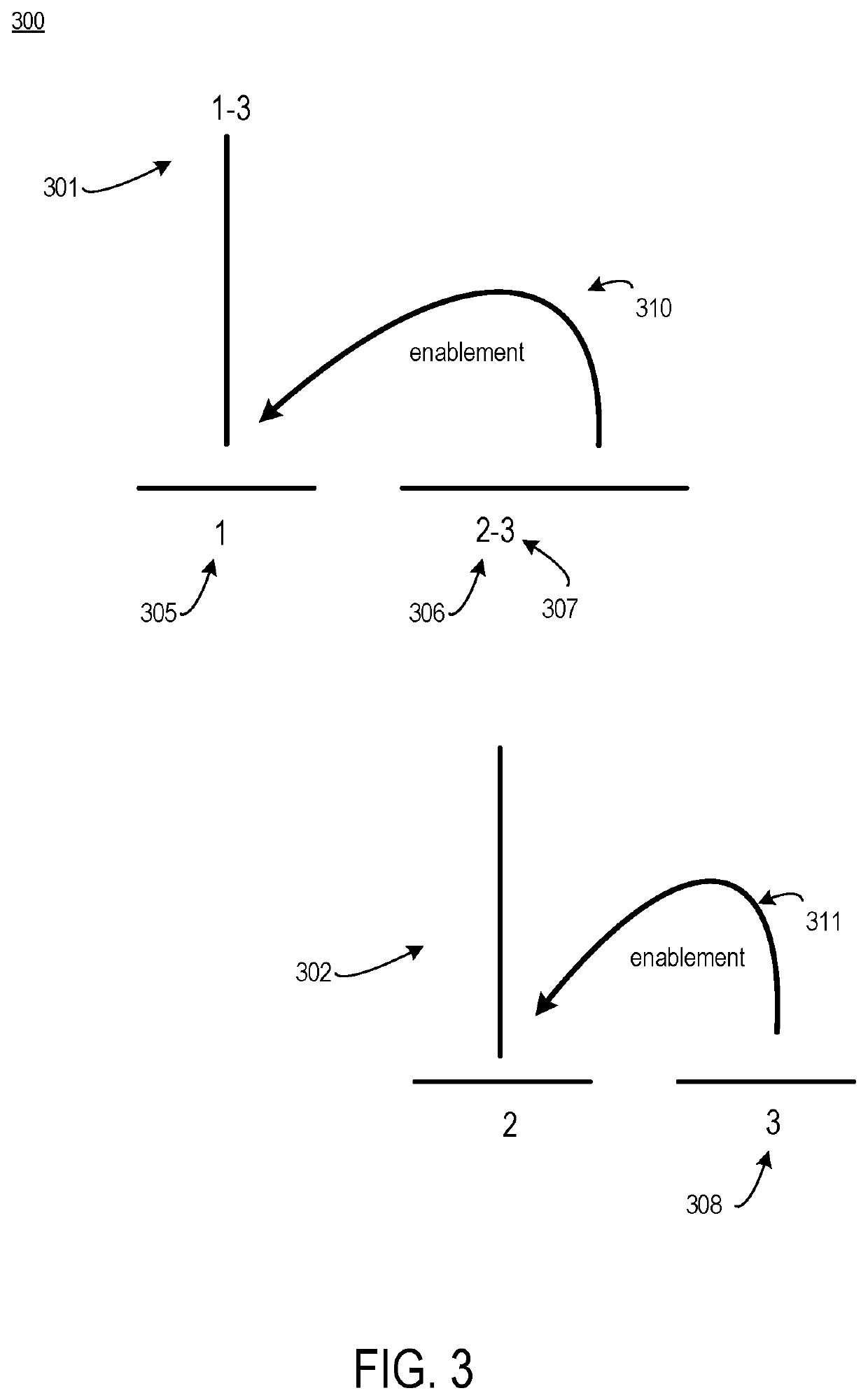Utilizing discourse structure of noisy user-generated content for chatbot learning
a user-generated content and chatbot technology, applied in the field of linguistics, can solve the problems of not being able to properly address, provide recommendations or implement chatbot systems, and leverage rich discourse related information to answer questions, and achieve the effect of minimizing the loss function
- Summary
- Abstract
- Description
- Claims
- Application Information
AI Technical Summary
Benefits of technology
Problems solved by technology
Method used
Image
Examples
Embodiment Construction
[0054]Aspects disclosed herein provide technical improvements to the area of computer-implemented linguistics. Using communicative discourse trees, further aspects disclosed herein implement improved automated agents, or chatbots, that can answer questions received from users. Using communicative discourse trees, aspects overcome the limitations of previous systems, which are often unable to separate the task of determining a topic from a sentence and addressing rhetorical agreement between a question and an answer.
[0055]“Communicative discourse trees” or “CDTs” include discourse trees that are supplemented with communicative actions. A communicative action is a cooperative action undertaken by individuals based on mutual deliberation and argumentation.
[0056]More specifically, aspects described herein represent rhetorical relationships between one or more sentences that include noise as communicative discourse trees. Noise refers to text that includes grammatical errors or unconvent...
PUM
 Login to View More
Login to View More Abstract
Description
Claims
Application Information
 Login to View More
Login to View More - R&D
- Intellectual Property
- Life Sciences
- Materials
- Tech Scout
- Unparalleled Data Quality
- Higher Quality Content
- 60% Fewer Hallucinations
Browse by: Latest US Patents, China's latest patents, Technical Efficacy Thesaurus, Application Domain, Technology Topic, Popular Technical Reports.
© 2025 PatSnap. All rights reserved.Legal|Privacy policy|Modern Slavery Act Transparency Statement|Sitemap|About US| Contact US: help@patsnap.com



